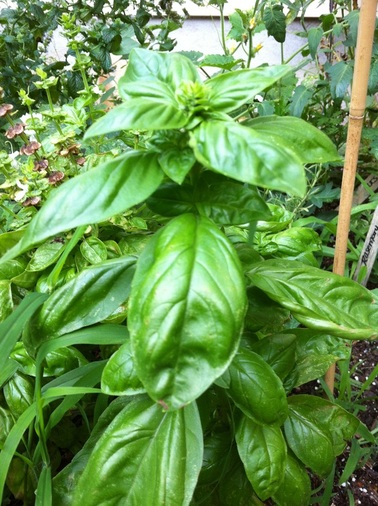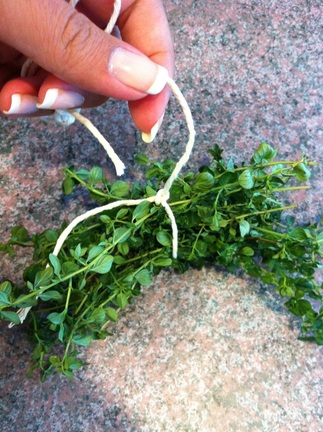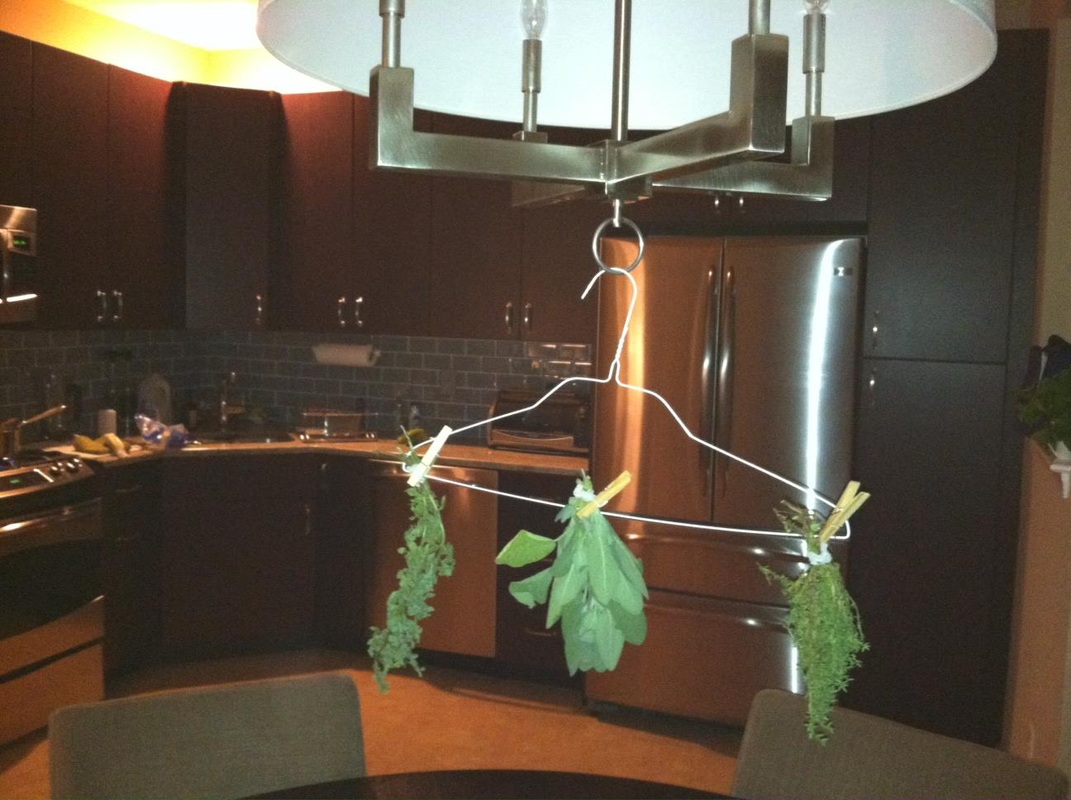Is your summer herb garden out of control? Here’s what you can do with your extra fresh herbs from your yard, window box, or the supermarket to make your bounty last all year long.
I have an herb garden, and a green thumb. So when I say I’m growing oregano, parsley, basil, mint, chamomile, rosemary, and chives - I mean enough to supply the entire neighborhood. Easily. I have a 6 foot by 6 foot plot filled with germinating goodness, just so you get the picture of what I’m talking about. It’s not just your usual window sill garden.
I love using fresh herbs when I cook. But sometimes, recipes specifically call for dried herbs, which are more concentrated or just blend better, so I need to make the proper selection. Years ago, I used to buy dried herbs from the store shelves before I grew my own. I still do, but now I only purchase the ones I don’t harvest myself. Many times I’ll even purchase fresh herbs from the supermarket which are not in season, too. Like many, when I buy a bunch of basil or a package of parsley, there’s just too much for me to use at once.
I have the same “problem” now, with my herb garden. I can’t possibly use two pounds of oregano at one time, or a bushel of basil. If I leave most of the plants outside, untouched through the fall, some will die, some will naturally dry, and some will make a comeback next year. But, if I’m smart, I can preserve my bounty starting now, and will have an abundance of dried herbs until next summer comes around.
This I can do, because I have embraced the art of drying herbs.
You might be asking – why in the world would I dry my own herbs when it’s so much easier for me to just get them with my groceries? For that matter why would I bother growing my own?
Well, first, there are the economies of scale. When you buy fresh or dried herbs at the store, you are paying a lot more for them than a few packages of seeds. Herbs are one of the easiest plants to cultivate. You don’t need to be a professional gardening guru to grow them. Even if you don’t have a lot of space, everyone has room for a window box or counter-top terrarium.
Even if you’re still not inspired to grow your own garden, when you dry your own herbs, for one, you are not wasting the “extra” fresh herbs that you have paid for at the store. Plus, your dried herbs will be more potent than any you can buy because they are fresher and not sitting on shelves for months or even years. You’ll also be using the best cuts and not the bottom of the barrel selections when you dry your herbs. Many processors pick the best looking herbs to sell fresh, while using the less attractive looking, perhaps wilted or withered ones for processing. You, do not have to distinguish the beautiful from the lesser lookers and can bottle them all.

When drying herbs, you can go about it two ways. You purchase a specialized herb drying rack like I have, or just tap a few nails into a wall and hang them there. Hang them? See, let me explain.
Step one is to snip some of the mature foliage. You want to leave your herbs on the stem. In order to dry the herbs, create small bundles and secure them with kitchen twine. Cut the twine at least 12 inches long so you can tie up your herb bundle and have excess string on one end.
With the excess string, create a loop and then hang it from your drying rack or from a nail on the wall. Hanging your herbs lets the air circulate around them so they will naturally lose their moisture. Next, leave them alone, hanging for at least a week if not more. Don’t touch them. Once they dry they become fragile and you’ll have leaves raining down on your floor.
When the herbs are dry, place a piece of waxed paper on your counter. Cut the twine off of the bundles, and keeping each kind of herb separate, gently separate the leaves from the stems using your pointer finger and thumb, going against the direction of growth.
You can either use an herb grinder at this point or crumble the spices on the waxed paper between your fingers to obtain a finer grain. I do not recommend using your coffee grinder for this purpose as even in dried herbs there are aromatic oils that will coat the blades in the appliance. So unless you want basil-scented coffee in the morning, use a separate mechanism to pulverize your dried herbs. You can even use a mortar and pestle for this purpose, too.

I use empty tea tins or re-use my empty spice jars for storing my dried herbs. You can also purchase empty glass storage bottles if you need additional containers. Some jars that have had herbs in them already, do retain oils and odor from what was stored in them previously, even if you run them through the dishwasher many times. An example of this is vanilla or vanilla beans. One time I tried to re-use an empty jar that had vanilla beans in it, placed thyme in it, and I had vanilla scented thyme after few days. [insert eek face here] That was not my desired effect. In those kinds of situations, I recommend using an old spice jar for the same kind of spice going forward. Don’t mix and match.
If you don't want the cuttings decorating your house, you can always hang them to dry in your garage, too. I don't recommend the basement because in humid climates, the dampness can hinder the drying process.
This blog post and comments can also be found on Patch at the above link.















 RSS Feed
RSS Feed





